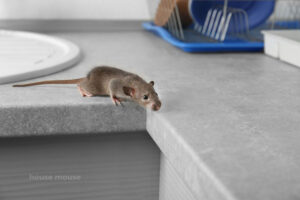This page may contain affiliate links. If you click and buy, we might get a small commission at no cost to you.
You have recently found yourself to be middle-aged and tired of being skinny, overweight, or even skinny-fat. I’ve been there… actually I’m still there. It’s no myth that it is much easier for people in their early 20s to get into shape.
For people like us though who are either approaching 40 or past it, it’s a whole different ball game. Not only will we not build muscle as fast as someone who is much younger and still full of hormones, but our bodies just don’t respond as well to weight training in general.
That’s not to say we can’t do it and see success, because we absolutely can. It just takes more work if you’re starting from scratch. If you already have a good base of muscle then congratulations, you will have an easier time than many of us.
So, is 40 too old to get started?
Absolutely not. No age is too old to get start weight training, you just have to do it smarter the older you are. This lady started weight lifting in her late fifties and is still going in her 80s!
How often should you lift weights over 40?
This all depends on you, your body, and how it responds.
Some things to keep in mind if this is you are new to weight lifting
These items apply to anyone who is just getting started with lifting weights, but even more if you’re not in your 20s.
Do plenty of research
Many people will say “get a trainer bro!”. I think PT’s are great for a lot of people, but not everyone can afford one and not everyone needs one. When I got started I just did a lot of research and watched a ton of Youtube videos. I learned where to avoid taking advice from and what place I could rely on for good info.
I don’t want to slam any websites or channels so I’ll just list a few good resources:
Take it easy at first
Don’t do too much too quick, you could injure yourself. Many people get frustrated that they aren’t seeing results as quickly as they’d like think if they double down on workouts that they’ll see results faster.
It doesn’t really work like that. Muscle builds after you workout, during the times that you aren’t working out. If you never give your body a chance to rest and heal you’ll actually end up spinning your wheels, more on that below.
Always stretch
Another good way to injure yourself is by not warming up and stretching before you start lifting. It takes about 5-10 minutes and could be the difference between a pulled back muscle that puts you out of a commission for a week or more and a new PR (personal record). So just take the extra time before you start lifting and do some stretches.
Eating right is crucial
This is just as important to building muscle as lifting weight. If you aren’t getting the proper nutrients in the right amounts then you may again end up spinning your wheels and not seeing the progress you hoped for.
I suggest you start by determining your TDEE (Total Daily Energy Expenditure), which basically tells you how many calories your body requires in order to maintain your current weight. From there you can add or subtract calories based on your goals. If your goal is to gain muscle you are going to eat more calories that your TDEE, if you want to lose weight then you need to eat less.
As an example I determined that my TDEE was right around 2200 calories/day. Based on this, whenever I want to lose weight I eat about 1800-2000 calories/day and if I wanted to gain weight I might eat as many as 2500.
But more important to gaining muscle, you need to eat the right amount of protein each day. You can learn about all of this the same way I did by using an app such as MyFitnessPal. Just download it, it’s great. Simply type in your goals and it will tell you exactly how much you need to eat and what your macros should be. Macros are just your proteins, fats, and carbs.
One goal at a time
I was very guilty of this at first. I wanted to gain muscle and lose weight at the same time, and it’s very hard to do. Some say physically impossible, others say it’s possible if you are new to working out but after that you have to choose one or the other. Which is why you hear about people bulking and cutting.
Bulking is eating above your TDEE (more calories) to gain muscle, cutting is eating below your TDEE to lose weight. If you try to do both at the same time by not eating enough for your body to grow muscle and working out like a maniac you will again just be spinning your wheels and not see optimal results.
If you are overweight I suggest just trying to lose the extra weight first. Once you are happy with your current weight you can attempt to bulk very slowly while hitting the weights to gain muscle.



